Editor's note:Fujian Navy Yard and Fujian Naval Academy were established in 1866, in Mawei, Fuzhou, the coastal capital of Fujian, a province located in China's Southeast. The establishment of these facilities was Chinese people's means to explore ways of catching up with the West as well as defending China's maritime sovereignty in the mid-19th century. The construction of the Fujian Navy Yard and Fujian Naval Academy involved contributions from a number of foreigners, French technicians in particular. These contributions ranged from importing advanced ship making technologies to training Chinese engineers.

A map of the shipyard site drawn in the 1870s is displayed in the Museum of Foochow Arsenal 1866 on May 14, 2024. In the summer of 1866, Zuo Zongtang, then governor-general of Fujian-Zhejiang, selected Fuzhou as the shipyard site for the facilities, after conducting a lot of field surveys with two French officers, Prosper Marie Giquel and Paul Alexandre d'Aigwebelle. The construction plan was jointly formulated by both the Chinese and French sides. (Photo by Huang Shan/China.org.cn)

A group photo of the French technical teams that worked on the Fujian Navy Yard is displayed in the Museum of Foochow Arsenal 1866 on May 14, 2024. During the establishment of the shipyard, the Chinese government entrusted Prosper Marie Giquel and Paul Alexandre d'Aigwebelle with the tasks of recruiting and leading foreign technical teams, running the shipyard as well as transferring relevant technologies. The cooperation proceeded with the use of both contracts and remunerations as effective measures of reward and punishment, thus becoming a successful example of reciprocity between China and foreign countries within modern history. (Photo by Huang Shan/China.org.cn)
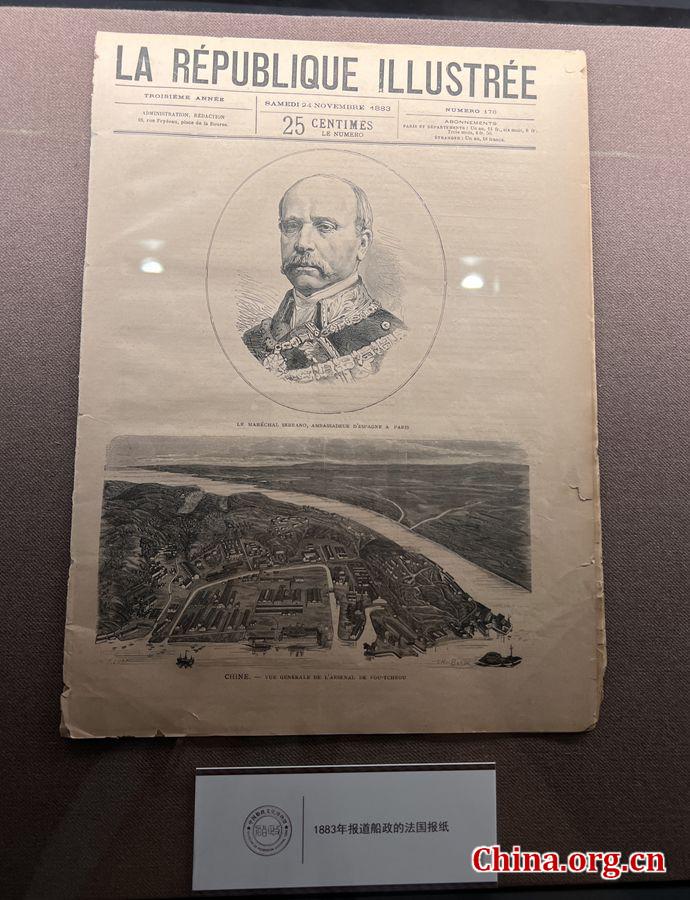
An edition of the French newspaper that reported on the Fujian Navy Yard in 1883 is displayed in the Museum of Foochow Arsenal 1866 on May 14, 2024. (Photo by Huang Shan/China.org.cn)
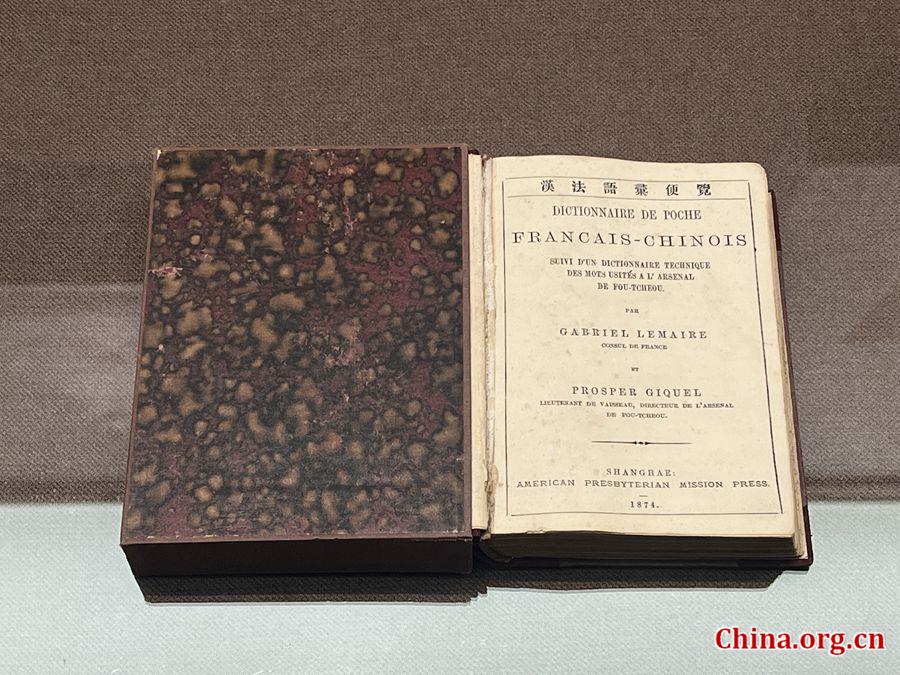
Dictionnaire De Poche Francais-Chinois, compiled by Prosper Marie Giquel and published in 1874, is displayed in the Museum of Foochow Arsenal 1866 on May 14, 2024. It is the first Chinese-French dictionary in China. The Fujian Naval Academy, established in 1866 in downtown Fuzhou and relocated to Mawei in 1867, included three schools -- the Engineering School, the Naval School and the School for Apprentices. French was the language of instruction in the Engineering School. (Photo by Huang Shan/China.org.cn)
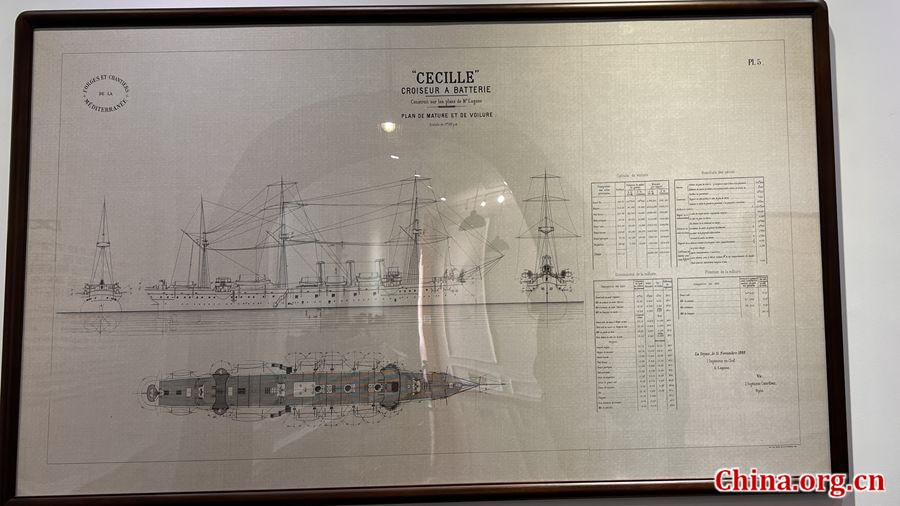
The blueprint for a late 19th-century French naval warship is displayed in an exhibition in the Chuanzheng Culture Theme Park on May 14, 2024. (Photo by Huang Shan/China.org.cn)

An illustration of Wan Nian Qing, Qing Dynasty's first domestically produced naval vessel, is displayed in an exhibition in the Chuanzheng Culture Theme Park on May 14, 2024. The shipyard in Mawei, Fujian, was the most modern in Asia and by the end of 1873, 15 modern ships, with propellers and steam engines, had been built by 2,500 Chinese workers trained to use European machinery. (Photo by Huang Shan/China.org.cn)
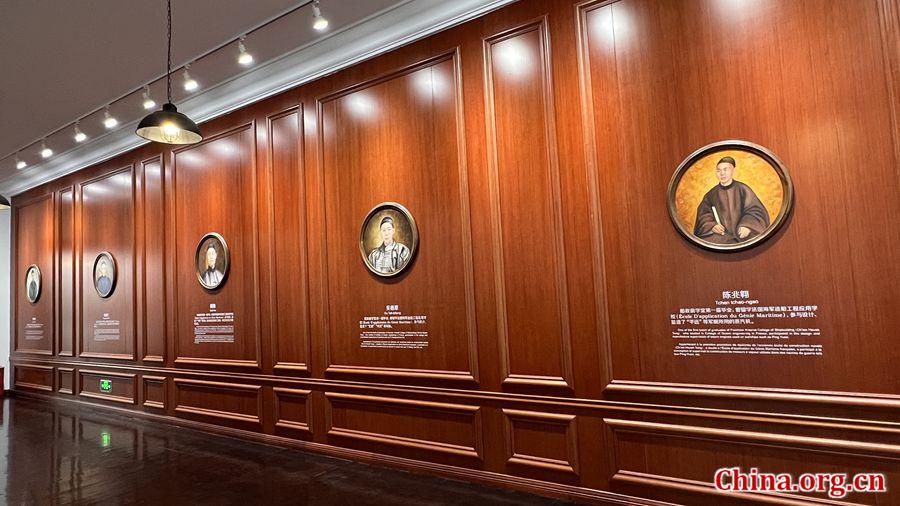
Portraits of graduates from the engineering school at the Fujian Naval Academy are displayed in an exhibition at the Chuanzheng Culture Theme Park on May 14, 2024. From 1866 to 1911, a total of 107 government-sponsored students from the Fujian Naval Academy were sent to pursue studies in Western countries. Of these students, 49 went to France for further education. They became chief designers for China's modern ships after their return. (Photo by Huang Shan/China.org.cn)
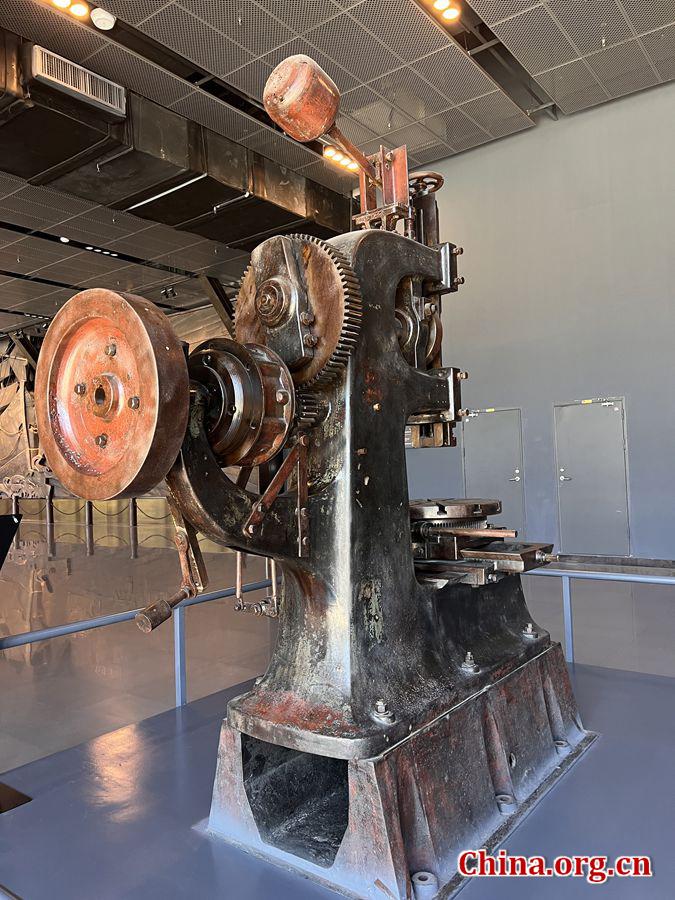
A French-made slotting machine purchased by the Fujian Navy Yard in 1867 is displayed in the Museum of Foochow Arsenal 1866 on May 14, 2024. (Photo by Huang Shan/China.org.cn)
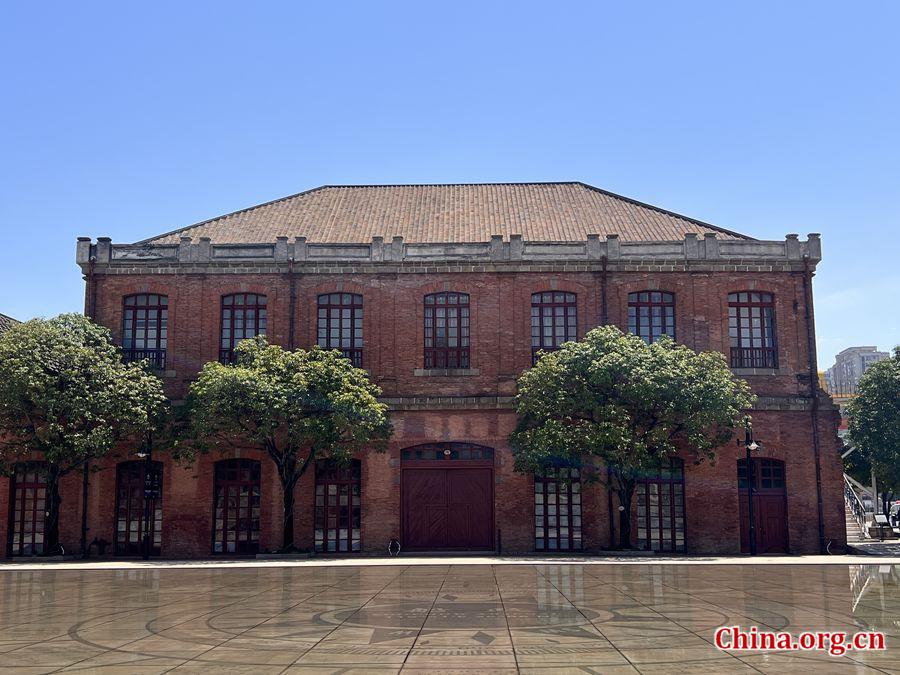
The former site for the machinery engineering workshop of the Fujian Navy Yard inside the Chuanzheng Culture Theme Park on May 14, 2024. It is one of the oldest red-brick buildings in China. (Photo by Huang Shan/China.org.cn)
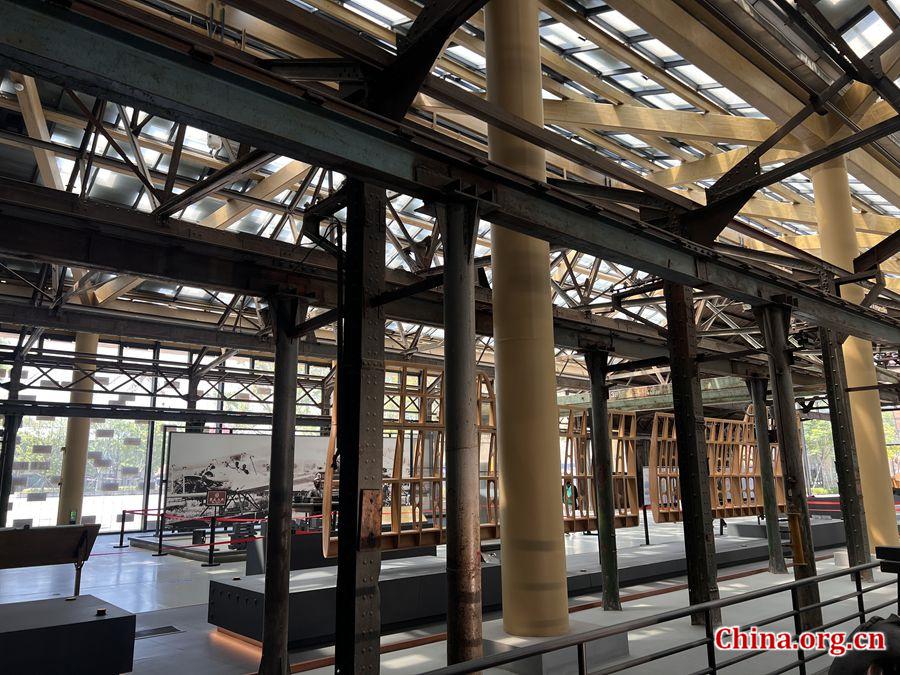
The interior view of the former metal-working forge of the Fujian Navy Yard inside the Chuanzheng Culture Theme Park on May 14, 2024. (Photo by Huang Shan/China.org.cn)

A western-style bell tower is under renovation inside the Chuanzheng Culture Theme Park on May 14, 2024. (Photo by Huang Shan/China.org.cn)
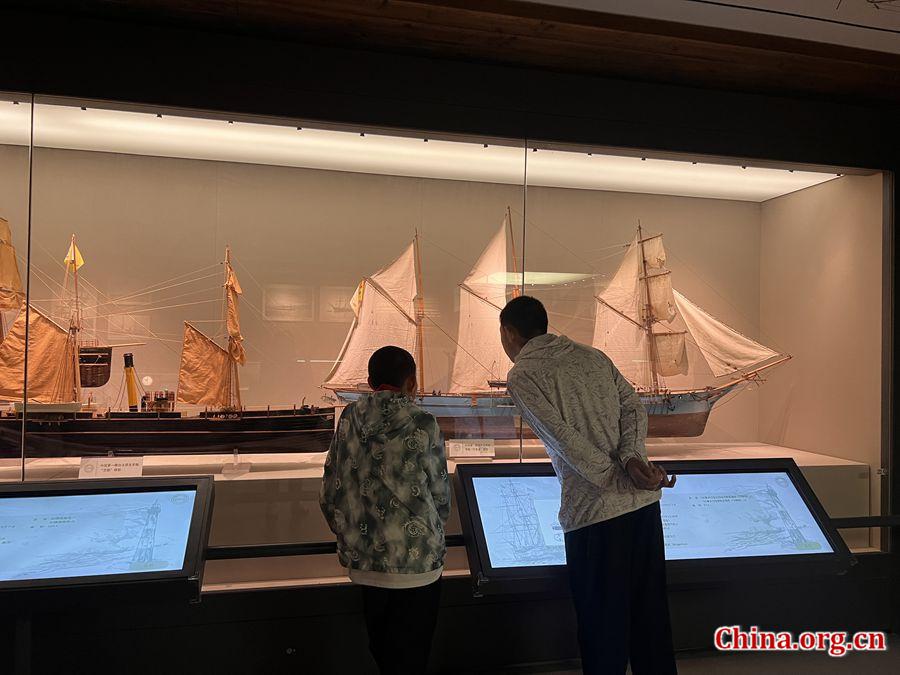
Two people watch ship models displayed in the Museum of Foochow Arsenal 1866 on May 14, 2024. (Photo by Huang Shan/China.org.cn)
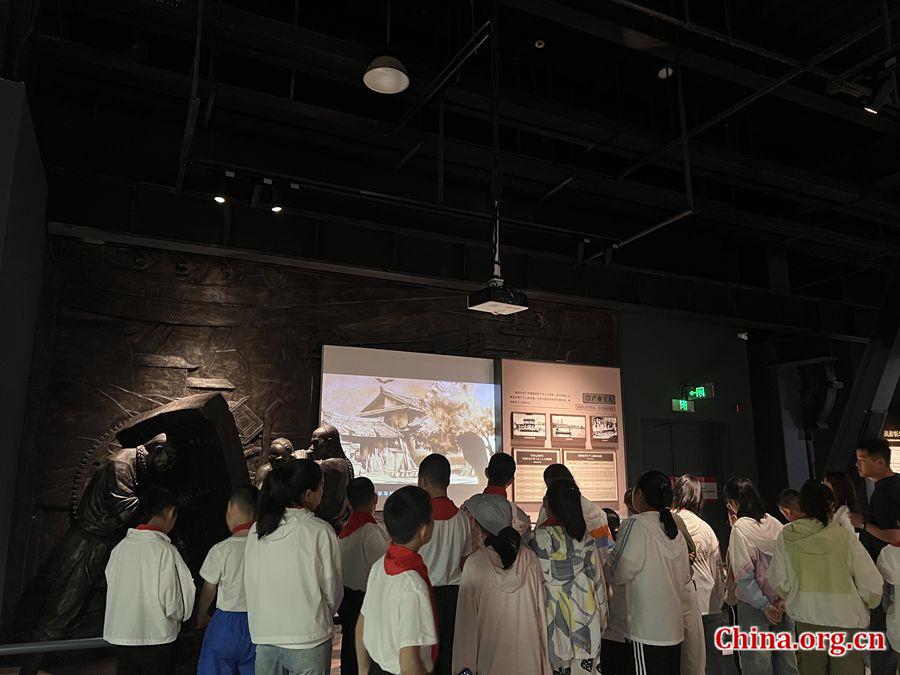
Students learn about China's shipbuilding history in the Museum of Foochow Arsenal 1866 on May 14, 2024. (Photo by Huang Shan/China.org.cn)
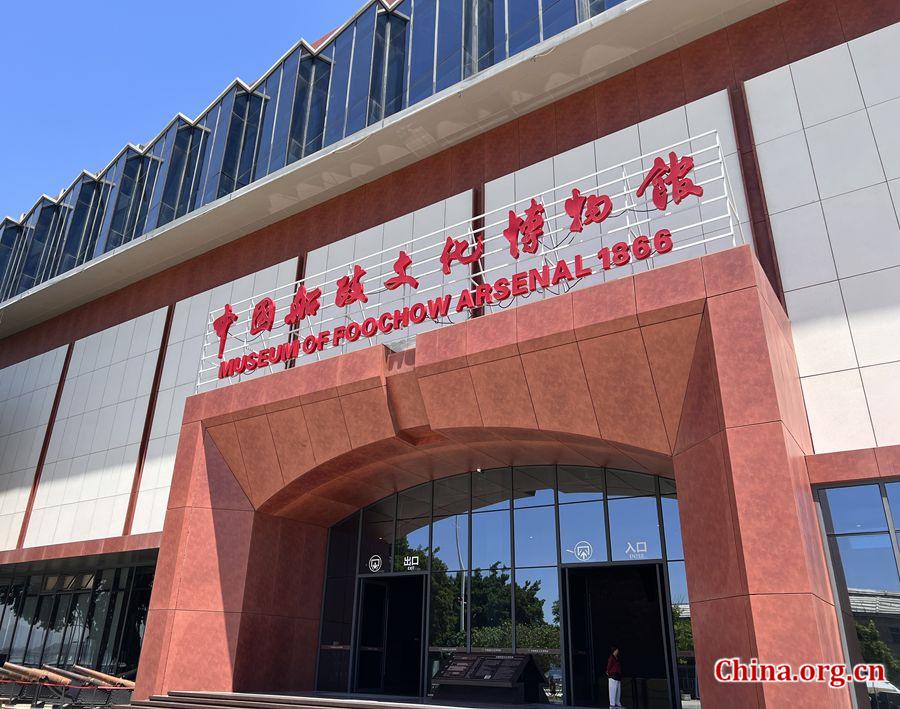
Entrance to the Museum of Foochow Arsenal 1866 inside the Chuanzheng Culture Theme Park on May 14, 2024. (Photo by Huang Shan/China.org.cn)
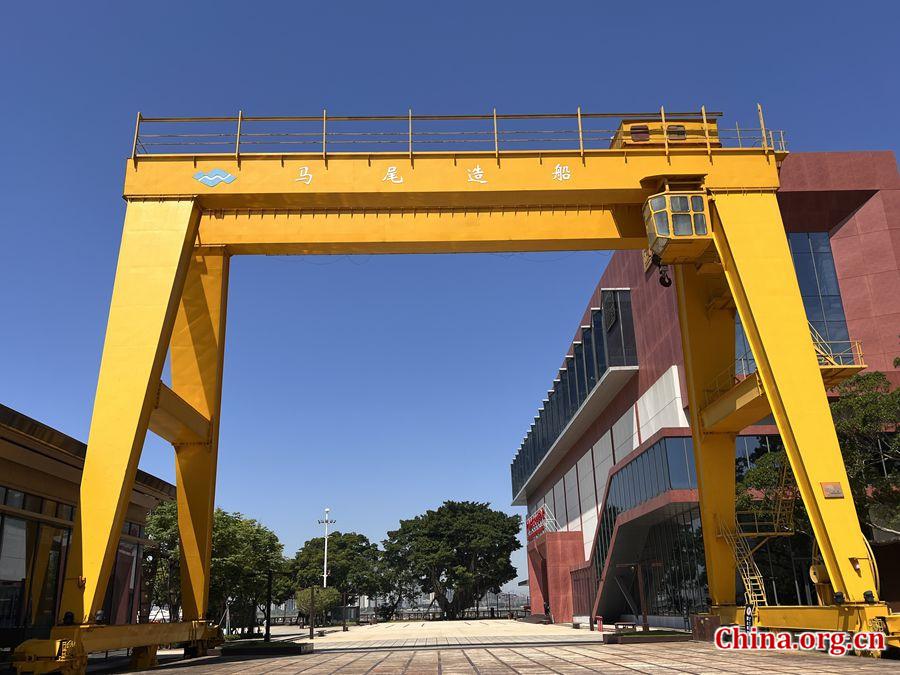
Entrance to the Chuanzheng Culture Theme Park on May 14, 2024. (Photo by Huang Shan/China.org.cn)